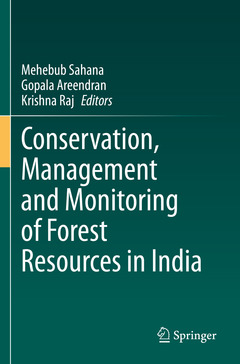Conservation, Management and Monitoring of Forest Resources in India, 1st ed. 2022

Dr Mehebub Sahana is a cultural and environmental geographer with an interest in analysing land-use changes with special respect to spaces, politics, and the governance of the living and materialistic world. His present research interests include social-environmental interface, socio-ecological resilience and systems thinking; geohazards; landscape ecology; multi hazard risk assessment; land-use change; rural-urban conversion and the socio-political implications of land-use dynamics. He is currently working as a Research Associate at the School of Environment, Education & Development, The University of Manchester, UK. Previously, he was employed as a Lecturer/research consultant (2018-2019) at Indira Gandhi Conservation Monitoring Centre (IGCMC), WWF-India, New Delhi. He received his Ph.D. in Environmental Geography (2018) from the Department of Geography, Faculty of Natural Sciences, Jamia Millia Islamia, New Delhi, India. He has contributed more than 50 scientific researchpapers in international journals on issues pertaining to land-use changes and environmental degradation and their links with climate change induced vulnerabilities.
Dr Gopala Areendran is the Director of Indira Gandhi Conservation Monitoring Centre (IGCMC) at WWF – India. He has more than 25 years of experience as a professional and leader in geospatial technology and has been the driving force of location-based data monitoring and analytics since 2001 at WWF-India. His work at WWF ranges from addressing conservation issues occurring in various landscapes, with a high focus on the tiger, elephant, and rhinoceros to overseeing several institutional GIS based projects. Dr Areendran has an MS degree in Ecology from Pondicherry University and PhD from Wildlife Institute of India. He has also worked with leading research centres like Salim Ali Centre for Ornithology and Natural History (SACON), Wildlife Institute of India (WII) and Madras Environmental
Date de parution : 08-2023
Ouvrage de 571 p.
15.5x23.5 cm
Date de parution : 08-2022
Ouvrage de 571 p.
15.5x23.5 cm
Disponible chez l'éditeur (délai d'approvisionnement : 15 jours).
Prix indicatif 189,89 €
Ajouter au panier


